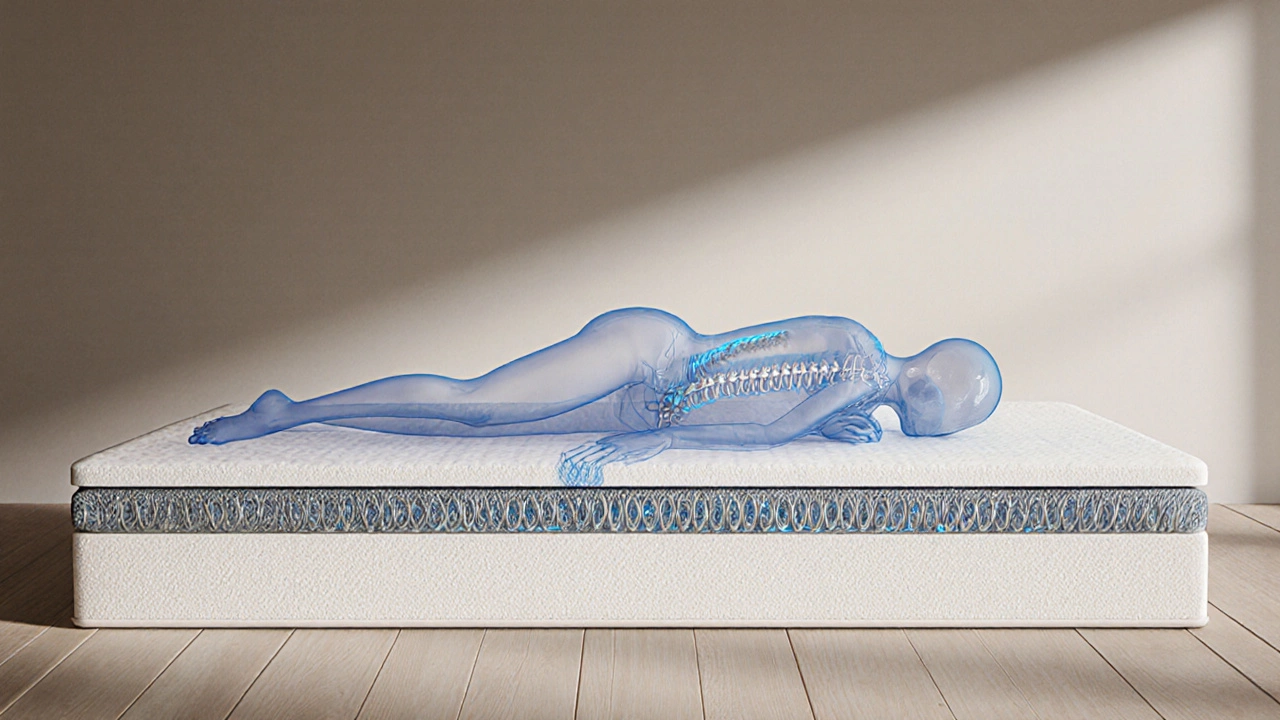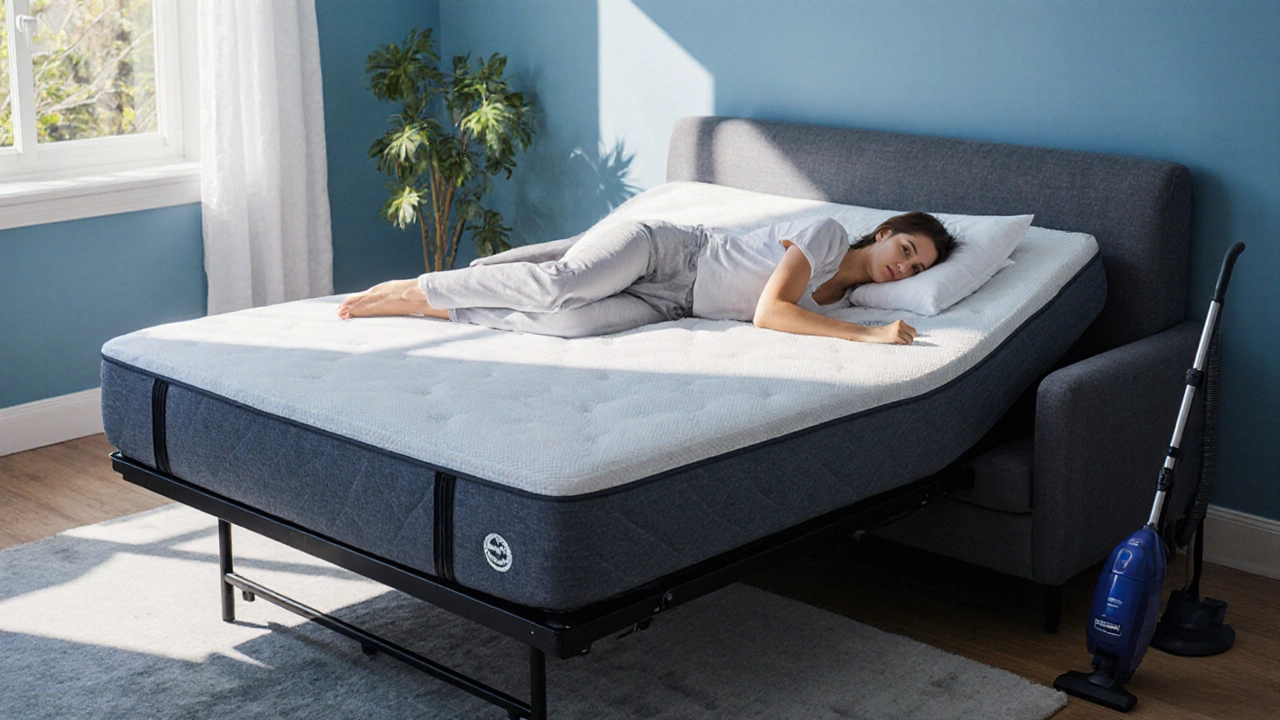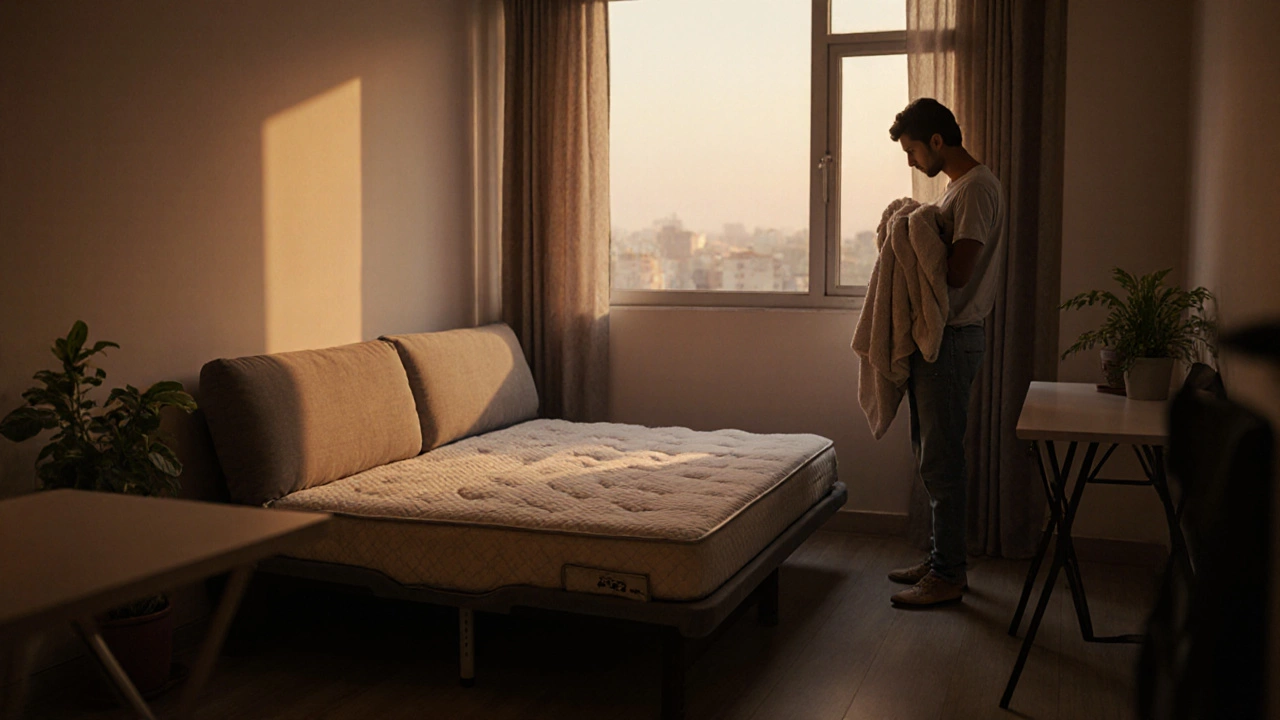Sofa Bed Mattress Type Selector
Find Your Perfect Match
Answer a few quick questions to determine which sofa bed mattress type best suits your needs.
When space is at a premium, many people turn to a Sofa Bed as the go‑to solution. But is it wise to make that couch‑turned‑bed your nightly routine? Below we break down the health, comfort, and durability factors you need to know before committing to a full‑time sofa‑bed sleep schedule.
Why Your Spine Pays Attention to the Surface
Your Spine needs a surface that supports its natural curves. A typical sofa‑bed mattress is thinner than a standard bedroom mattress, often ranging from 4 to 6 inches thick. That reduced depth means fewer layers of support, which can lead to uneven pressure distribution. Over time, the lack of proper spinal alignment may cause chronic back pain, especially for side sleepers who rely on a plush cushion for shoulder relief.
Understanding Mattress Types Inside Sofa Beds
Not all sofa‑bed mattresses are created equal. The most common constructions are:
- Foam - usually memory or high‑density polyurethane. It conforms well to body shape but can retain heat.
- Spring Mattress - features coil systems that give bounce and breathability, but the springs can become noisy after years of use.
- Hybrid Mattress - a blend of foam comfort layers and pocketed springs for a balance of pressure relief and support.
- Air‑over‑foam - a thin air chamber under a foam layer, offering adjustable firmness, but the mechanism adds weight and complexity.
Each type impacts sleep health differently, influencing everything from pressure points to temperature regulation.
Durability: How Nightly Use Affects Mattress Longevity
Most sofa‑bed manufacturers design their units for occasional guest use, not 365‑day occupancy. Repeated compression reduces foam density, causing "bottoming out" where the mattress no longer rebounds. Springs can lose tension, leading to sagging zones. In practice, a foam sofa‑bed mattress may start losing its original firmness after 2‑3 years of nightly use, while a quality spring system may hold out 4‑5 years before noticeable dip.

Sleep Hygiene Concerns: Dust Mites, Allergies, and Odors
Because sofa beds sit closer to living‑room traffic, they attract dust, pet dander, and moisture more readily than a bedroom mattress. Dust Mites thrive in the warm, humid environment created by daily use, potentially worsening Allergies. Regular vacuuming, a breathable mattress protector, and occasional exposure to sunlight can mitigate the buildup.
Ergonomic Hacks to Make Nightly Sofa‑Bed Sleeping Safer
- Rotate the mattress weekly. Flipping isn’t always possible, but rotating shifts wear patterns and prolongs uniform support.
- Add a mattress topper - a 2‑inch memory foam layer can bridge the gap between sofa‑bed thickness and a full‑size mattress, improving pressure relief.
- Use a supportive adjustable base if your sofa‑bed frame allows it; a slight incline at the head can reduce snoring and improve airway alignment.
- Invest in a breathable, washable cover to keep Dust Mites and allergens at bay.
- Maintain a cool bedroom temperature (around 65°F/18°C) to counteract the heat‑retention tendency of foam.
These tweaks help align your body, protect the mattress, and keep the sleeping environment healthier.

When It’s Okay and When It’s Not
Short‑term stays (a few nights for guests, occasional weekend naps) are fine for most sofa‑bed constructions. However, if you find yourself waking with stiff shoulders, sore lower back, or increasing allergy symptoms, it’s a sign the surface isn’t meeting Sleep Quality standards. In that case, consider these alternatives:
- Invest in a dedicated futon with a thicker, higher‑grade mattress.
- Swap the sofa‑bed for a daybed paired with a high‑density foam mattress.
- Upgrade to a platform bed that offers full support while keeping the footprint modest.
Bottom Line: Make an Informed Decision
Sleeping on a sofa bed every night isn’t a hard rule‑breaker, but it carries trade‑offs. The key is to match the mattress type, maintain ergonomics, and monitor your body’s signals. If you notice persistent discomfort, it’s time to reassess and perhaps move to a dedicated sleeping surface.
| Type | Comfort Rating (1‑5) | Durability | Price Range (AUD) | Best For |
|---|---|---|---|---|
| Foam | 4 | 3‑4 years | 300‑700 | Side sleepers, heat‑sensitive users |
| Spring | 3 | 4‑5 years | 250‑600 | Back sleepers, budget‑conscious |
| Hybrid | 5 | 5‑7 years | 800‑1,200 | All sleepers seeking balanced support |
| Air‑over‑Foam | 4 | 4‑6 years | 1,000‑1,500 | Those wanting adjustable firmness |
Can I use a regular mattress on a sofa‑bed frame?
Most sofa‑bed frames are built for a specific thickness. Adding a standard 10‑inch mattress can stress the hinges and reduce stability. If you want a thicker surface, look for a custom low‑profile mattress designed for sofa‑bed frames.
Does sleeping on a sofa‑bed affect posture?
Yes. A thin mattress often fails to keep the spine in neutral alignment, especially for side sleepers. Using a memory‑foam topper can improve posture by adding contouring support.
How often should I replace a sofa‑bed mattress?
If used nightly, expect 3‑5 years of usable life depending on material. Look for signs like permanent indentations, squeaking springs, or increased back pain.
Are there health risks from dust mites in sofa beds?
Dust mites can trigger allergic reactions, especially in humid climates. Regular cleaning, breathable covers, and occasional sun exposure reduce the risk.
What’s the best way to improve comfort without buying a new sofa‑bed?
Add a high‑density mattress topper, rotate the mattress weekly, and ensure the frame is fully tightened. These steps can add 1‑2 inches of effective thickness and extend comfort.

